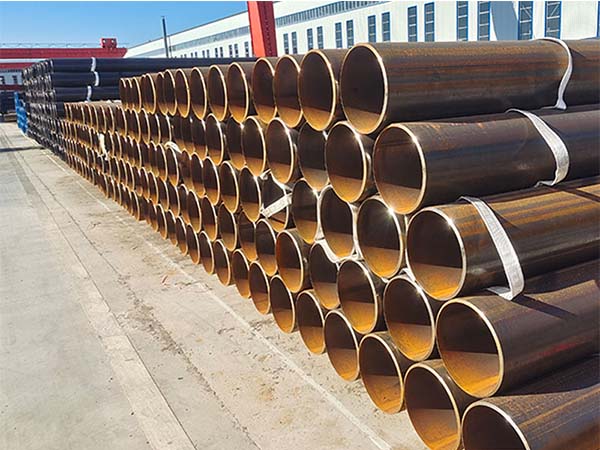The oil and gas pipeline transportation system has set higher standards for the reliability, safety and economy of pipe materials.
Resistance welded Pipes (ERW Pipes) have become key materials in oil and gas pipeline engineering due to their excellent mechanical properties, controllable weld quality and significant cost advantages. This article will comprehensively and deeply analyze the application value of ERW pipes in oil and gas pipelines from four dimensions: manufacturing process, performance characteristics, application scenarios and selection key points.

1. Overview of Manufacturing process
Raw material preparation
High-strength hot-rolled or cold-rolled steel strips are adopted, and the chemical composition is strictly tested to ensure the uniformity of the base performance of the pipe.
Forming and Welding
After uncoiling, flattening and edge cutting, the steel strip enters the forming machine to be bent into a cylindrical prototype. By means of high-frequency induction heating and the principle of resistance welding, the material is melted and formed under pressure at the joint to create an axial continuous weld seam.
Weld strengthening and treatment
The weld seams were inspected by online ultrasonic, magnetic particle and X-ray, and defects were removed in time. When necessary, heat treatment or shot blasting strengthening should be carried out on the weld seam to improve the crack resistance and fatigue life.
Size correction and anti-corrosion packaging
After straightening, fixed-length cutting and end face grinding, internal and external anti-corrosion coatings or covering protection are carried out as per the project requirements. Finally, they are marked with inkjet codes, bundled and stored in the warehouse, and delivered to the construction site.
2. Performance advantages
The weld quality is controllable: The heat impact in the weld area of ERW pipes is small, the stress concentration is low, and the online detection coverage rate is high, ensuring the safe operation of long-distance pipelines.
High strength and toughness: Made of high-strength low-alloy steel that meets API 5L grade, it features excellent low-temperature toughness and resistance to implosion (HIC).
Economic cost: The production pace is fast, energy consumption is low, and material utilization rate is high. Compared with seamless pipes and submerged arc welded pipes, its cost is more competitive.
Flexible specifications: Various nominal diameters (NPS 4 "- 24") and wall thicknesses (Sch 10 - Sch 160) can be customized according to project requirements to meet different conveying pressure levels.
3. Typical Application scenarios
Long-distance oil and gas pipelines: The main pipelines for transporting crude oil, natural gas or condensate gas, which require the pipe materials to have an extremely long fatigue life and corrosion resistance.
Onshore gathering and distribution networks: Short-distance gathering and distribution within processing stations, small-diameter supporting pipe networks, emphasizing flexible layout and rapid installation.
Offshore platforms and construction operations: Anti-corrosion coating and covering technologies ensure that ERW pipes maintain excellent durability in seawater environments, making them suitable for connection pipelines between the seabed and platforms.
Artificial lifting and injection system: CO₂ and water injection agent pipelines require pipe materials to have high pressure resistance and acid and alkali resistance. ERW pipes can be equipped with special inner lining treatment.
4. Key points for project selection
Standards and certifications: Products that comply with international/national standards such as API 5L, ISO 3183, GB/T 9711 are preferred to ensure traceability of quality.
Weld seam inspection: The supplier is required to provide complete online ultrasonic, magnetic particle and radiographic inspection reports. Third-party inspection shall be carried out if necessary.
Anti-corrosion solution: According to the environmental corrosion grade (ISO 12944-2 standard), select epoxy coating, hot-melt epoxy anti-corrosion tape or polyethylene/polypropylene anti-corrosion coating.
Logistics and Installation: Considering the logistics transportation dimensions of ERW pipes and the on-site welding and connection costs, plan the elbow, flange and hot joint schemes in advance.
Conclusion
ERW Pipes is winning wide recognition in the oil and gas pipeline industry with its stable weld quality, high cost performance and flexible and diverse specifications. Only by correctly understanding its manufacturing process and performance characteristics and combining them with the actual needs of the project can the best balance be achieved among safety, economy and construction efficiency.
